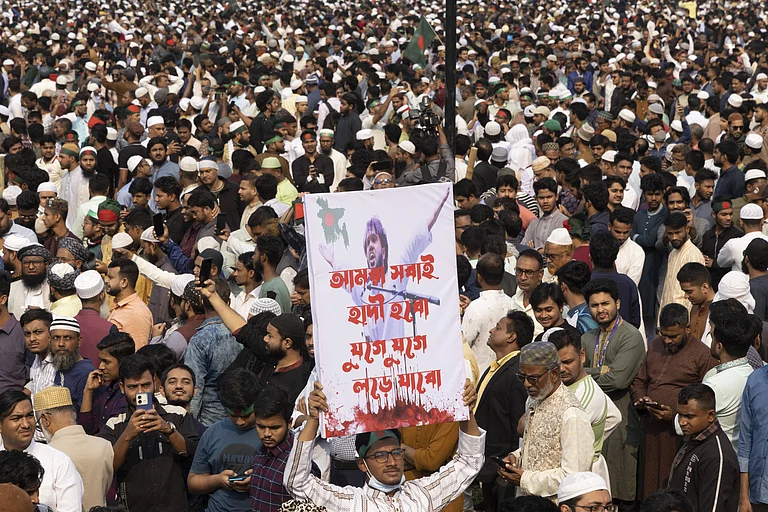Union Home Minister Amit Shah on Thursday announced the Free Movement Regime between India and Myanmar will be scrapped to "ensure internal security of the country".
"It is Prime Minister Shri Narendra Modi Ji's resolve to secure our borders," he said in a post on X.
In addition to addressing security concerns, the move is also aimed at ensuring the demographic structure of India’s North Eastern States bordering Myanmar is maintained.
The announcement comes two days after the Union Home Minister informed the public of the centre's decision to fence the entire length of the Indo-Myanmar border, through a social media post.
"The Modi government is committed to building impenetrable borders. It has decided to construct a fence along the entire 1643-kilometre-long Indo-Myanmar border. To facilitate better surveillance, a patrol track along the border will also be paved," Amit Shah said in his post on X.
Amit Shah said 10 km of the stretch in Moreh, Manipur, had already been fenced with two pilot projects of fencing through a Hybrid Surveillance System (HSS) under execution.
"They will fence a stretch of 1 km each in Arunachal Pradesh and Manipur. Additionally, fence works covering approx 20 km in Manipur have also been approved, and the work will start soon," the post read.
Plans for scrapping FMR and constructing the fence were first announced by a senior government functionary last month.
The entire length of the Indo-Myanmar border is expected to be fenced in the next four-and-a-half years. Those crossing the border will then be required to obtain a visa.
The FMR was implemented in 2018 as part of India's Act East policy, in Mizoram, Manipur, Nagaland, and Arunachal Pradesh. This change in policy is prompted by ongoing tensions in Manipur.
What is FMR?
Under the FMR, members of hill tribes, whether citizens of India or Myanmar, residing within 16 km on either side of the border, can freely cross over by presenting a border pass with a one-year validity. Each visit allows a stay of up to two weeks.
The FMR was introduced to promote migration without a visa for tribes along the Indo-Myanmar Border (IMB), aiming to strengthen ties, encourage people-to-people contact, and boost trans-border trade. It served as a means for locals to connect culturally and economically with their counterparts across the border.
Nevertheless, the agreement became inactive in 2020, initially due to the impact of the Covid-19 pandemic. Following the military coup in Myanmar in 2021 and the ongoing refugee crisis, India officially halted the Free Movement Regime (FMR) in September 2022.
This suspension was later prolonged in November when the state Home Department issued an order expressing concerns that the FMR could potentially contribute to a rise in the influx of illegal nationals into India, given the prevailing law and order situation in Myanmar.
Why is it being scrapped?
This decision stems from concerns over the misuse of the regime by militants and trans-border criminals for smuggling weapons, fake currency, and escaping to safe hideouts after committing crimes.
Insurgent groups have reportedly exploited the FMR to carry out attacks on the Indian side and flee towards Myanmar. The heightening tensions in Manipur between the Kuki and Meitei communities have also been cited as a reason for the move.
Manipur Chief Minister N Biren Singh, in September, disclosed that the state government had formally requested the central government to permanently end the Free Movement Regime (FMR) along the Indo-Myanmar border. This request was part of the state's efforts to tackle illegal immigration.
Singh emphasised the state was actively pursuing the creation of a National Register of Citizens and the installation of border fencing with Myanmar. Singh linked the FMR as a key factor contributing to the conflict, stating that ethnically similar communities living on both sides of the border, especially the Kukis in Manipur and the Chins in Myanmar, have resulted in people predominantly crossing over to Manipur.
Allegations of a significant illegal influx of Chin people from Myanmar into Kuki-dominated districts of Manipur have been cited as a trigger for the ethnic turmoil in the state.


























